growing lemon balm
planting & care guide
Tuck a quick-growing lemon balm plant into your garden bed or patio container. Let it bask in sunshine and balmy breezes.
In just a few weeks, you'll be plucking leaves from this luscious, citrus-y herb for homemade lemon balm tea!
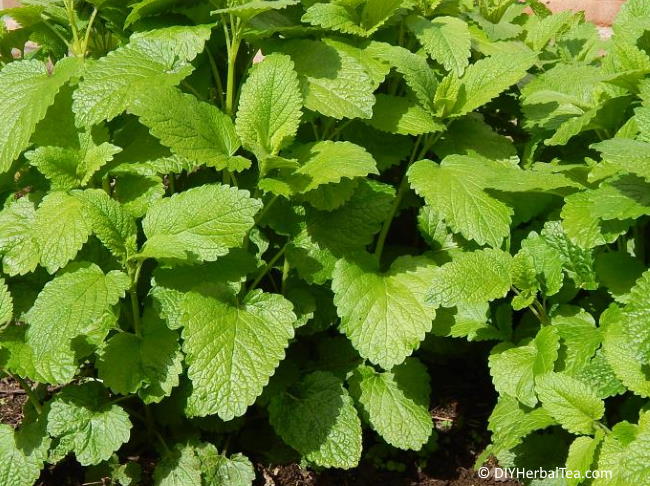 Lemon Balm In The Tea Garden
Lemon Balm In The Tea Garden
What's On This Page?
(Click any link to jump straight to that section)
best growing conditions
I call lemon balm my "happy-go-lucky" tea herb because it adapts so well to so many different climates.
If you live in an area where winter temperatures rarely dip below 45-50°F (7-10°C), you'll be able to grow and harvest lemon balm all year round.
 Lemon Balm in My South Florida Winter Tea Garden
Lemon Balm in My South Florida Winter Tea Garden
In colder regions, lemon balm's growing season is more limited, from mid-spring to early fall. As the days get shorter and night-time temps drop, the plant will die back.
Not to worry, though. The roots will survive the winter cold to a frigid -20°F (-29°C), and the plant will re-emerge like magic from under the snow and ice in springtime.
 Spring Thaw in My New England Tea Garden
Spring Thaw in My New England Tea Garden
Lemon Balm's requirements are few:
- Soil. I've grown lemon balm in a variety of different garden soils from
fertile loam, to clay-ey, to sandy. As long as the soil drains
well and has some nutrients (natural or added), lemon balm is happy.
For planters, any good-quality container mix will do. I prefer Black Gold or Fafard. Their mixes drain well and don't dry out as quickly as some other brands.
- Sunlight. Lemon balm grows best with direct sun from early morning to noon, then dappled afternoon shade.
- Water. Once it's established in its garden bed or container, lemon balm can tolerate some dry spells. All in all, though, it's better to keep the top 1-2 inches (2.5 - 5 cm) of soil evenly moist.
planting lemon balm
What You'll Need:
- 12-18 inches of garden bed space, loosened and weed/rock-free to a depth of about 8 inches (20 cm), or
- a container at least 12 inches (30.5 cm) wide and 8 inches (20 cm) deep with drainage holes in the bottom
- good-quality potting mix (NOT garden soil!) for container
- shovel and/or garden trowel
- watering can or garden hose
- a packet of lemon balm seeds or a nursery-grown starter plant
Seeds or nursery plants?
Lemon balm is easy to grow from seeds. But ...
Do you really want to wait 3 months from the time you sow your seeds to your first harvest?
Cut your wait-time in half. Start with a nursery plant!
 Healthy, Fragrant Nursery-Started Lemon Balm Plant
Healthy, Fragrant Nursery-Started Lemon Balm Plant
Young lemon balm plants are available at many garden centers from the start of growing season into early summer.
* Helpful Hint: Can't find lemon balm in your area? Order from a reputable online seller.
Richters and Colonial Creek Farm
are my go-to sources for buying live herb plants online. My orders have always arrived promptly and in great shape.
Wait until nighttime temps are consistently at 50°F (10°C) or warmer before transplanting a young lemon balm plant into your garden or container.
A few chilly nights won't hurt it. But do cover the plant or move its container to a sheltered spot if a late-spring frost is predicted.
When you're ready to plant:
- Carefully remove the plant from its pot, keeping as much soil around the root system as possible.
- Set the plant into the soil at the same depth as it was in its nursery pot, and fill soil in around it.
- Water thoroughly to settle the plant into its new home.
 Newly Planted Lemon Balm
Newly Planted Lemon Balm
growing lemon balm from seeds
Are you determined to start from seeds? These tips will put you on the right track ...

- Spring planting. Sow your lemon balm seeds in the garden bed or container in springtime after all danger of frost has passed. Keep the seed bed evenly moist. You should see germination in 10-14 days.
- Fall planting. Fall sowing is all about timing. Wait for that narrow window of time when the ground is still work-able but after your first frost. Sow your seeds then.
Don't water your seedbed after planting. Let Mother Nature do all the work! Your seeds will stay dormant through the winter months and start sprouting when the time is right in spring. - Planting depth. No matter what the package instructions say, don't bury your lemon balm seeds in the soil! They need light to germinate.
Just sprinkle them on top of the soil, then gently pat them down to make good seed-to-soil contact. - Watering. Lightly water your seedbed. In the days and weeks to come, keep the soil evenly moist to help your seeds germinate and your seedlings grow.
- Thinning. Each fully mature lemon balm plant will need about 18 inches (46 cm) of space all to itself. When your seedlings have grown to about 2 inches (5 cm) tall, thin out some of the weaker-looking plants by snipping them at ground level with sharp scissors. If necessary, thin again a few weeks later.
caring for lemon balm plants
Water. Give your lemon balm a thorough soaking whenever the top 1 - 2 inches (2.5 - 5 cm) of soil feel dry to the touch.
Fertilizing. Average, healthy garden soil will feed your lemon balm plants through the growing season. No additional fertilizer is required.
Nutrients leach out of potting soil every time you water. To keep your container-grown lemon balm well nourished, feed with an organic, liquid fertilizer once every 10 days or so.
Pruning. Regular harvesting during the growing season is all the "pruning" your lemon balm will need. Start when the plant is about 8 inches (20 cm) tall, cutting back no more than 1/3 of the plant at any one time.
If you see flower buds, that's a sign your lemon balm is getting ready to "go to seed".

Would you like your lemon balm to naturally
re-seed in your garden?
Let the flowers bloom, die back, and shed
their seeds. Later in the summer, or maybe next spring, new lemon balm plants will pop up. Sometimes where you least expect them! ;-)
handy items for growing lemon balm ...
- Home ›
- How to Grow Tea Herbs ›
- Growing Lemon Balm
If you enjoyed this article and found it helpful, please click the "Like" button to let me know. Thanks!
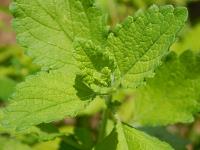
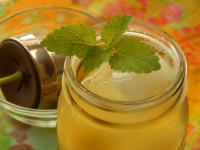
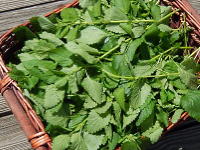

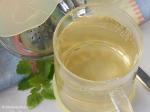
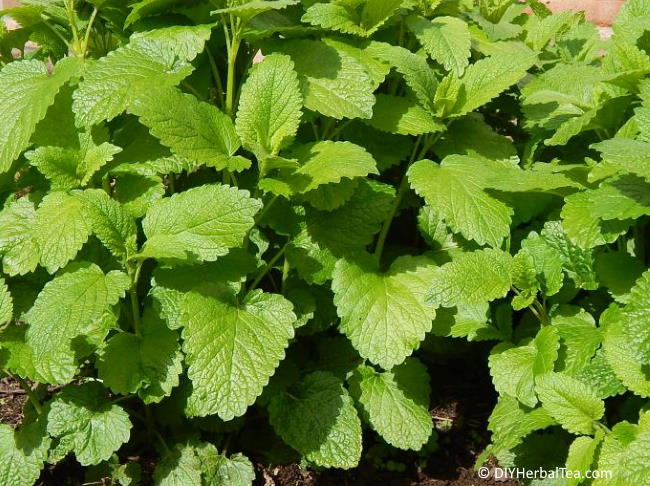
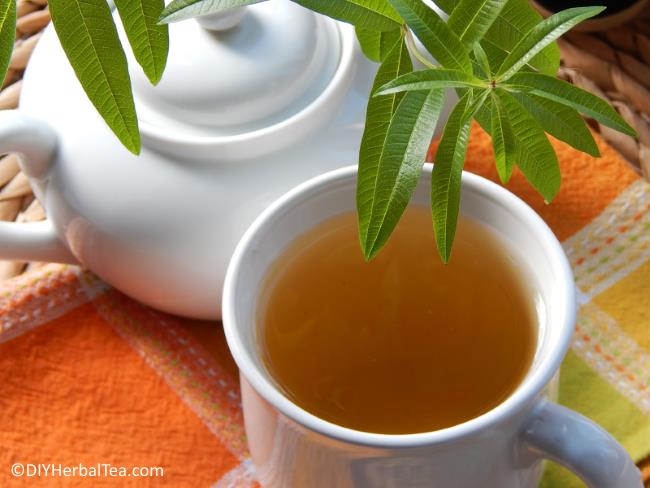
New! Comments
Feel free to leave me a comment in the box below!